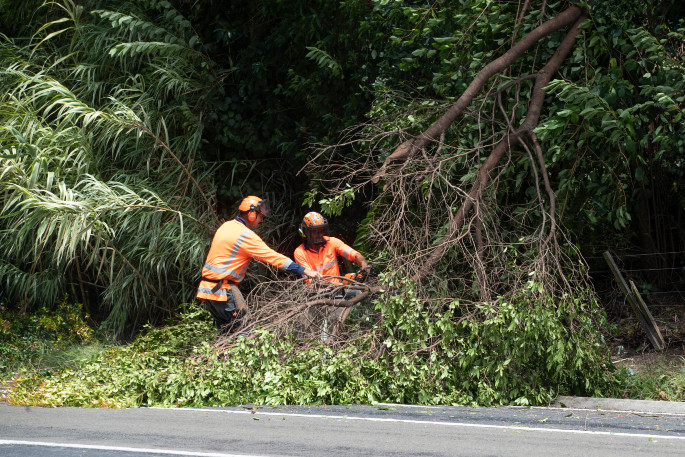On the weekend of February 13, ex-tropical Cyclone Dovi swept across New Zealand from west to east, leaving a wake of severe damage
Most of the damage was caused by extreme wind speeds in regions of the North Island.
Gusts reached up to 130 km per hour in Marlborough and 120 km per hour in Taranaki, Wellington and Waikato.
"Nevertheless, rainfall totals over the storm's most intense 24-hours reached 121 mm at Wellington Airport, 99 mm at Ngawi and 92 mm at Kaikoura and Farewell Spit," says a CLIMsystems team spokesperson, an organisation that has released a detailed blog on the impact of ex-tropical Cyclone Dovi and the risks associated with possible future extreme weather events..
"The extreme weather event had a significant social and economic impact. In some cases, this event led to individuals needing to move out of their homes while damaged trees were removed, leaving a substantial financial burden that insurance did not cover."
The CLIMsystems team say that tree failure can cause a range of unforeseen issues by damaging water, transportation and electrical infrastructure.
"Ambiguous tree regulation can also create significant confusion when assessing liability. Examples of the major infrastructure that was disrupted included powerline failures which caused about 50,000 people to go without power, and the cancellation of at least 100 Air New Zealand flights.
"In Hamilton City, the cost of cleaning up fallen trees and streetlight poles, with more than 700 call-outs and 1500 service requests, was estimated to be over $1 million."
Scientific and social information is evaluated by CLIMsystems from various sources to elucidate the scale of the storm's impact.
"Historical changes in wind gusts are analysed from the 1980s to 2021, which revealed an increasing signal of gusts over 70 km per hour.
"The real-time satellite imagery and wind gusts speeds from ex-tropical Cyclone Dovi were also assessed, displaying the dispersion of Dovi as its tailing winds hit New Zealand.
"Finally, future models of extreme wind speeds are provided for the Waikato, Auckland and Wellington Regions into 2090 using the latest CMIP6 data."
CLIMsystems say the results highlight the haphazard nature of extreme winds and, consequently, the value of making more cautionary adaptation decisions based on the worst-case scenario.
"These extreme weather events are expected to increase in frequency and intensity with climate change. Implementing effective mitigation and adaptation strategies is critical to reducing the social, economic and environmental impact. These strategies should lead to tangible climate action that can mitigate the economic cost, physical destruction and social disruption of these events."
CLIMsystems' comprehensive blog highlights the importance of risk management, adopting mitigation measures like planting appropriate native trees for carbon sequestration and adaptation action such as using resilient building materials and removing potential hazards.
The blog is available at: https://www.climsystems.com/blog/post/ex-tropical-cyclone-dovi-crossed-new-zealand----impacts-and-possible-future-cyclone-related-risks-4-4-2022



0 comments
Leave a Comment
You must be logged in to make a comment.